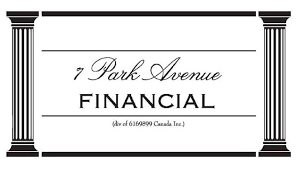|
Why Equipment Leasing In Canada Dominates The Acquisition Of Assets For Your Business : Right Choice 101
Revolutionize Your Asset Acquisition with Lease Equipment Financing
YOUR COMPANY IS LOOKING FOR CANADIAN LEASE EQUIPMENT FINANCING!
Why Lease Equipment Financing is the New Essential for Canadian Businesses
You've arrived at the right address! Welcome to 7 Park Avenue Financial
Financing & Cash flow are the biggest issues facing business today
ARE YOU UNAWARE OR DISSATISFIED WITH YOUR CURRENT BUSINESS FINANCING OPTIONS?
CALL NOW - DIRECT LINE - 416 319 5769 - Let's talk or arrange a meeting to discuss your needs
EMAIL - sprokop@7parkavenuefinancial.com

Revolutionize Your Asset Acquisition with Lease Equipment Financing
INTRODUCTION: The Growing Demand for Equipment Leasing Solutions
Equipment lease financing has become a crucial part of the business landscape in Canada, providing an efficient and cost-effective alternative for asset acquisition.
With business credit often being a hurdle, the requirement for equipment financing options is rising. This solution is one of the most viable alternatives to traditional purchasing methods, especially for Canadian entrepreneurs.
What Assets Can Be Leased? From Construction to Computing - A Broad Spectrum
The term "equipment" encompasses various business assets vital for Canadian enterprises. This includes but is not limited to:
- Construction machinery
- Aircraft
- Computers and Technology
- Telecommunication assets
- Software solutions (Yes, software too can be financed!)
- Manufacturing plant machinery and more.
The Bottom Line - Flexibility in Choice
In essence, equipment lease financing can cover virtually any asset necessary for your business operations.
Crafting the Perfect Lease - Tailoring to Your Needs / Competitive Rates and Beyond
While many customers are initially drawn to the prospect of a competitive lease rate, we stress that selecting the right lease type, duration, and structure is equally essential. These factors must align with your business model, financial standing, and cash flow requirements.
Seasonal Businesses and Unique Structures
Whether you run a seasonal business that faces fluctuations or have specific industry needs like bulk orders during holidays, lease financing can be uniquely structured. Options for seasonal payments, quarterly or even annual payments can be crafted to suit your business’s particular needs.
Inclusive Financing – More than Just the Equipment
Lease structures often cover more than the equipment itself. The lease can encompass associated expenses, from financing taxes to installation and maintenance, such as computing technology or advanced shop floor machinery.
Preserve Capital & Lines Of Credit and Reap Financial Advantages
Our clients recognize the necessity for equipment but value the preservation of capital and working capital. Leasing enables them to maintain cash on hand or utilize bank operating lines or asset-based lending facilities.
Tax Benefits and More
Business leasing offers various financial and accounting advantages, including often tax-deductible lease payments, which set it apart from traditional bank loans and other financial instruments.
Lease versus Buy – Making the Right Choice
Conducting a thorough lease versus buy analysis is advisable to ascertain the optimal method for business asset acquisition.
Conclusion: Maximizing the Benefits of Equipment Lease Financing in Canada
The proper utilization of leasing offers both financial benefits and overall business advantages. Talk to 7 Park Avenue Financial, a trusted and experienced Canadian business financing advisor, to explore these opportunities.
FAQ: FREQUENTLY ASKED QUESTIONS PEOPLE ALSO ASK MORE INFORMATION
What is lease equipment financing, and how does it differ from buying equipment outright?
Lease equipment financing allows businesses to use essential equipment by paying regular lease payments instead of purchasing the equipment outright. Unlike buying, leasing doesn't require a large upfront investment, providing flexibility in cash flow management. It can also include various options at the end of the lease term, such as purchasing the equipment at a reduced price or upgrading to newer technology.
Can any type of business equipment be leased, and what are some common examples?
Yes, various business equipment can be leased, ranging from heavy machinery to software. Common examples include construction equipment, airplanes, computers, telecommunications assets, software solutions, manufacturing plant machinery, and more.
How can lease equipment financing be tailored to fit business needs or seasonal variations?
Lease equipment financing offers flexibility in structuring payment terms to match a business's unique needs or seasonal variations. For example, a lease can be structured with seasonal payments for businesses that experience fluctuations in revenue, or it can include quarterly or even annual payments. This custom structuring helps align leasing costs with the business's revenue and cash flow patterns.
What are the financial advantages of leasing equipment instead of traditional bank loans?
Leasing equipment often provides several financial advantages over traditional bank loans, including potential tax benefits, as lease payments may be tax-deductible. Leasing doesn't tie up capital in a depreciating asset and often allows for financing of the full cost, including taxes, installation, and maintenance. It also provides flexibility to upgrade or change equipment as business needs evolve.
How can I determine whether to lease or buy the equipment for my business?
Deciding between leasing or buying equipment requires careful consideration of various factors, such as your business's financial standing, cash flow, growth plans, and the type of equipment needed. Conducting a thorough lease versus buy analysis, considering aspects like total cost, tax implications, and flexibility, will help you determine the right path for your business. Consulting with a financing expert specializing in lease equipment financing can also provide valuable insights tailored to your situation.
What are the tax benefits of leasing assets in Canada?
Some common tax benefits associated with leasing assets include :
-
Deductibility of Lease Payments: Generally, lease payments for business-related assets are considered operating expense and can be deducted for tax purposes. This can lower the taxable income for a business.
-
No Capital Cost Allowance (CCA) Complexity: When purchasing an asset, a business must use the Capital Cost Allowance (CCA) method to depreciate the asset over time. Leasing avoids this complexity, as the lessee does not own the asset and, therefore, does not need to calculate the CCA. This can simplify accounting and tax reporting.
-
Off-Balance Sheet Financing: Depending on the type of lease, it may be considered off-balance sheet financing. For example, an operating lease/ fair market value lease does not appear as a liability on the balance sheet, which may enhance the appearance of a company's financial position.
-
Flexibility: Leasing may offer more flexibility for businesses that need to adapt to changing technology or business needs. This flexibility may not have direct tax benefits but can have overall financial benefits, particularly for assets that quickly become obsolete.
-
Potential GST/HST Benefits: In some cases, the Goods and Services Tax (GST) or Harmonized Sales Tax (HST) on lease payments may be recoverable as an Input Tax Credit (ITC) if the asset is used for commercial activities. This can provide a tax benefit to businesses by offsetting some of the costs of the lease as a business expense
-
Cash Flow Management: Since leasing often does not require a substantial upfront investment like purchasing, it may help with cash flow management when structuring monthly lease payments. While this is not a direct tax benefit, it can improve a company's financial position.
It's worth reiterating that Canadian tax law can be complex and subject to change, so it's always a good idea to consult an equipment finance specialist or a Canadian tax professional who understands your situation. Different provinces may also have unique tax considerations relating to leasing so that local expertise may also be valuable.
What are other financing options versus equipment leasing?
Equipment Leasing
- The lessor holds the title to the equipment in equipment finance
- Offers the option to buy at the end of the lease via customized solutions
- Can provide fixed-rate financing for the monthly payment
- Equipment leases typically do not require a large down payment to the leasing company
Business Loans
- Allows you to retain the title to the purchased equipment around traditional financing such as a term equipment loan versus solutions via leasing companies
- Secures the purchase against existing assets.
- Interest rates may fluctuate throughout the loan term, causing budgeting issues.
- Often requires a larger down payment, sometimes up to 20% of the total equipment cost.
Invoice Factoring
- A method of purchasing equipment by leveraging accounts receivable.
- Allows quick conversion of outstanding payments into cash by selling invoices to a factor.
- Ideal for startups and small businesses, with up to 90% of the value paid depending on customer creditworthiness.
- Funding is usually available in a matter of days, making it popular in industries like manufacturing and transportation.
How does equipment leasing affect the balance sheet?
Equipment leasing affects the balance sheet depending on the type of lease entered into: either an operating lease or a capital (finance) lease. Here's how each affects the balance sheet:
Operating Lease
- Asset: The leased equipment is not recorded as an asset on the lessee's balance sheet.
- Liability: Lease payments are typically considered an operating expense, so there's no long-term liability recorded.
- Expense: Lease payments are expensed on the income statement, reducing net income.
- Impact: Since the asset and corresponding liability are off the balance sheet, the company's debt ratios might look more favourable.
Capital (Finance) Lease
- Asset: The leased equipment is recorded as an asset on the lessee's balance sheet, reflecting ownership or control over the equipment.
- Liability: A corresponding liability is recorded, representing the obligation to make future lease payments.
- Depreciation and Interest: The asset is depreciated over its useful life, and the interest on the lease liability is expensed.
- Impact: This approach aligns more closely with traditional financing, where an asset is purchased with borrowed funds, potentially affecting financial ratios like debt-to-equity.
In summary, the classification of the lease will determine how it's accounted for on the balance sheet and its impact on the financial statements and ratios. The chosen method should align with the accounting standards relevant to the entity's jurisdiction.
Click here for the business finance track record of 7 Park Avenue Financial

' Canadian Business Financing With The Intelligent Use Of Experience '
STAN PROKOP
7 Park Avenue Financial/Copyright/2025

Stan Prokop is the founder of 7 Park Avenue Financial and a recognized expert on Canadian Business Financing. Since 2004 Stan has helped hundreds of small, medium and large organizations achieve the financing they need to survive and grow. He has decades of credit and lending experience working for firms such as Hewlett Packard / Cable & Wireless / Ashland Oil
|